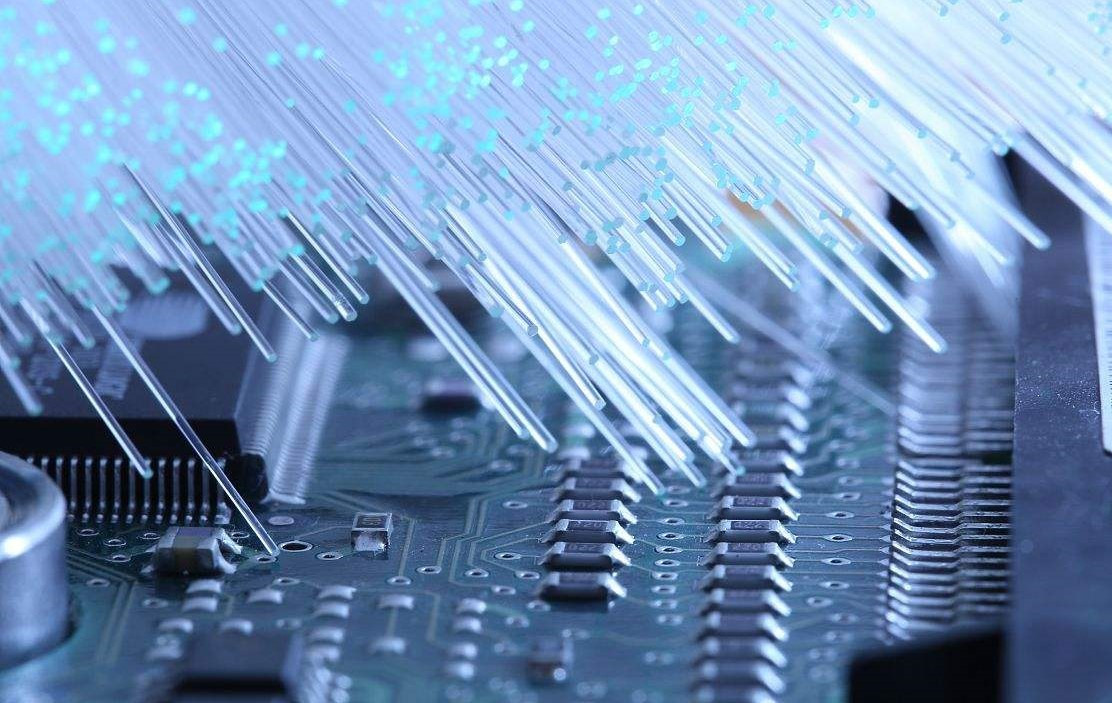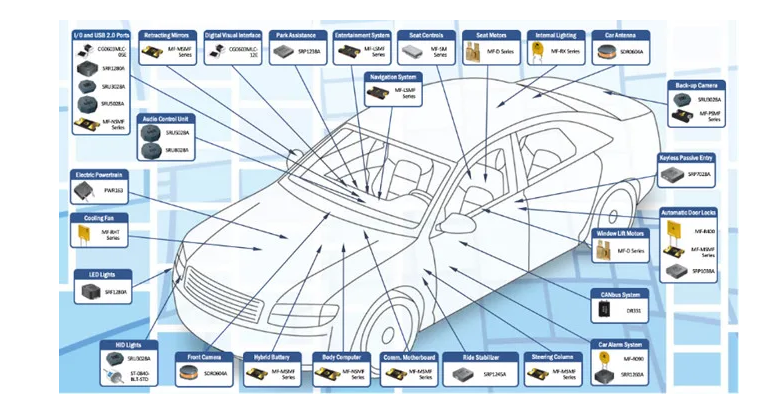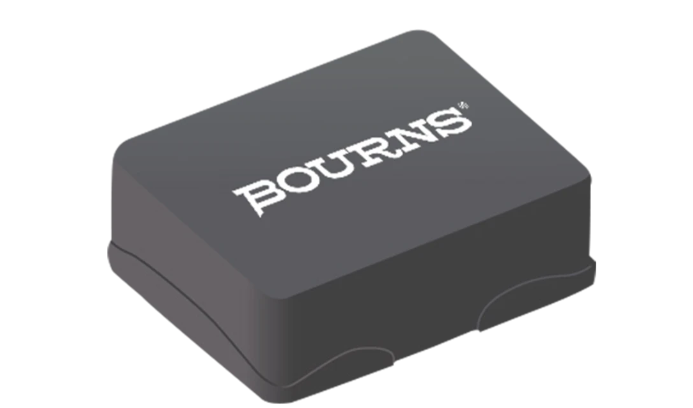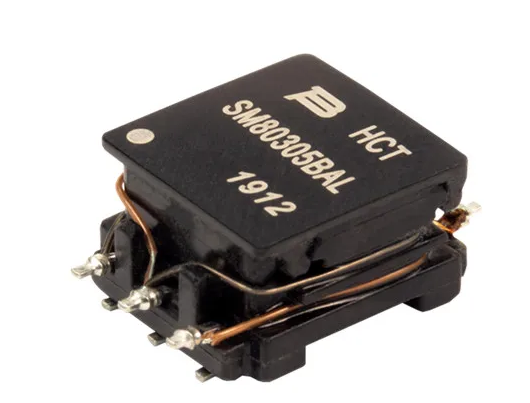
Over the past few years, the global electric vehicle (EV) has maintained strong growth. According to Energy Innovation, by 2050, electric vehicles will account for 65% to 75% of global light vehicle sales and establish a dominant position in future mobility.
However, if you think that the change in the automotive field today is only "replacing the fuel tank with a battery", it is too simple, and it is actually a comprehensive change to electrification, networking, intelligence, sharing (the so-called "new four modernizations") as the goal, involving energy, safety, comfort, intelligence and many other aspects, many changes are subversive.
New ecology of vehicle electrification
This change is also reshaping the entire automotive industry ecology, which of course includes the electronic components that are the basis of automotive electronics. Specifically, the reshaping role of automobile electrification for electronic components is reflected in the following six aspects.
Ⅰ.Greater demand for electricity
There are two obvious characteristics of automobile electronization: first, the main power of the vehicle is converted from the internal combustion engine to the electric energy stored in the high-voltage battery; Second, there are more and more electronic devices in the vehicle, which makes the demand for total electric energy of the vehicle greatly increase.
Some analysis shows that compared with internal combustion engine cars, electric vehicles require more than 100kW of power supply, which is 20 times higher than the former!
This change means that the components required for vehicle electrification will also develop towards higher power, higher voltage resistance and other trends to adapt to the needs of more power-consuming electric vehicles.
Ⅱ.Higher efficiency
With greater power demand comes the quest for greater efficiency. More efficient power conversion at high switching frequencies, with as little power loss as possible, not only contributes to higher battery life, but also helps reduce thermal stress on devices and systems, improving reliability and extending service life. Therefore, components that perform well in terms of efficiency will certainly be more favored by electric vehicles.
Ⅲ.Smarter control
In order to achieve higher endurance and provide users with a similar driving experience to internal combustion engine cars, electric vehicles in addition to continuous innovation in battery technology and the pursuit of more efficient power management efficiency, intelligent control is also one of the essential links. One of the representative is the BMS battery management system, which can timely and accurately monitor battery voltage, temperature, health status and other parameters, and feed back to the main control unit to form an optimal control strategy, tap the "potential" of the power battery, and extend its service life. In the construction of BMS system, there is no doubt that many new electronic components need to be enabled.
Ⅳ.Greater EMC design challenges
Vehicle electrification will also bring new EMC design challenges. For example, the use of higher switching frequency power semiconductor devices, its high voltage and high current interference will be more and stronger. Therefore, automotive electronic components must meet stringent EMS (electromagnetic immunity) and EMI (Electromagnetic interference) testing requirements to ensure that the entire system complies with the relevant EMC design specifications.
Ⅴ.Higher security
Because of the use of high-voltage batteries, electric vehicles need to be designed with more safety considerations. For example, reliable isolation between high and low voltage domains should be provided to avoid security threats to personnel or circuits. For electronic components, creepage distance is also a key parameter related to safety. Sufficient creepage distance can effectively prevent ignition between devices or between devices and ground, avoiding threats to personal safety. While meeting the requirements of UL, CSA and VDE creepage distance safety standards, how to achieve miniaturization design of components? It is also a very testing topic for component manufacturers.
Ⅵ.More integrated reliability
The particularity of the automotive application environment determines that the reliability of electronic components will also have more comprehensive requirements. Therefore, stable electrical performance, stable mechanical structure, all-weather environmental tolerance, these are also the characteristics of electronic vehicle components in the era of automobile electrification must have.
The road to reinvention of electronic components
To sum up, the electrification of the car is like opening a new ecosystem, and electronic components want to land, take root and develop in this new ecological environment, you must carry out adaptive optimization.
This optimization can generally be expanded in two dimensions:
● First: Around the changes in industry demand, create products that meet the standards of vehicle regulations, and gradually form a strict quality system for automotive components. At the same time, on this basis to expand their own automotive product portfolio to meet the needs of diverse applications.
● Second: Through new products, new processes, continue to improve the performance and competitiveness of automotive products, and constantly meet higher design requirements.
Bourns is a good example of building the components needed for vehicle electrification along such a technological path. With its extensive experience in the design, manufacture and supply of highly reliable vehicle gauge components, Bourns can provide a very comprehensive component solution for the design and development of electric vehicles.
Figure 1: Automotive component solutions from Bourns

Taking magnetic components as an example, Bourns can provide a wide range of automotive gauge magnetic components, including high creepage distance and electrical gap isolation transformers, BMS signal transformers, Chip LAN transformers, power inductors, high current common mode chokes, etc. These products are manufactured in IATF 16949 and ISO 14000 certified plants and tested to the AEC-Q200 standard to meet the requirements of today's and tomorrow's automotive electrification developments.
At the same time, Bourns continues to enhance the performance benefits required for electronic vehicles through continuous innovation in design, process and materials, including:
● Miniaturization: While ensuring performance, the component size is "compressed" to meet the design requirements of space-constrained automotive applications.
● Low EMI noise: Reducing EMI noise while maintaining high efficiency, a typical example is the Bourns power inductor.
● Thermal management: Provides better temperature stability, while reducing the impact of thermal stress by improving efficiency, in order to facilitate the optimization of thermal management of the entire system.
● High robustness and reliability: It helps to extend the product life to a greater extent, and provides guarantee for the reliable long-term operation of the vehicle.
● High efficiency: With the use of advanced materials and structures, such as advanced metal alloy powder core, molding process technology, flat winding, self-lead terminals, etc., to achieve ultra-low DC resistance, thereby providing higher efficiency.
It is worth mentioning that these product optimization initiatives have also been precipitated into Bourns' technical "genes", playing a decisive role in the "reshaping" of more and more automotive grade products.
Bourns car gauge components
Here we take a look at some of Bourns' car gauge components to see how electronic components will be reshaped under the trend of automotive electrification.
1.SRP2512TMA shielded power inductor
Power inductor refers to the inductor that can pass high current, and is widely used in the design of high-power switching power supply. For automotive electrification, Bourns has developed a series of AEC-Q200 compliant power inductors, including the SRP2512TMA shielded power inductor.
As the name suggests, the SRP2512TMA uses a magnetic shielding structure, so low radiation can be achieved, thus effectively addressing EMI challenges. Second, compared to other inductors of similar size constructed using conventional wire winding, this new inductor from Bourns uses a flat wire structure, which helps to reduce DCR resistance and achieve higher efficiency. In addition, the inductor uses a metal alloy powder core to achieve high saturation current, a feature that is critical in high-current, high-power applications. In addition, the SRP2512TMA power inductor is made of a high temperature graded material for greater temperature stability and supports operating temperatures up to 150°C to meet the requirements of complex automotive applications.
In short, the SRP2512TMA shielded power inductor has the characteristics of low radiation, high saturation current, high temperature rise and low DC resistance, which can well meet the high performance and high reliability design requirements for EMI filtering, DC-DC converters and power supply applications in automotive electrification.
SRP2512TMA shielded power inductor

2.HCTSM8 series power transformer
Isolated DC-DC converters are needed in many areas of the automotive electrification architecture, both for efficient voltage conversion and for reducing the risk of electric shock through electrical isolation, avoiding ground loops due to different potential levels, and preventing voltage transients from input to output.
Push-pull is a common topology in isolated DC-DC converter designs. Compared to other types of DC-DC converters, push-pull converters offer more stable input currents, less input line noise, and higher efficiency in high power applications, and therefore play an important role in vehicle electrification.
Bourns' HCTSM8 series power transformers are the solution specifically built for vehicle gauge push-pull DC-DC converters. The series of transformers comply with AEC-Q200 standard and adopt ferrite ring core to provide high coupling coefficient and high efficiency; Withstand voltages up to 7.5kV; Isolated operating voltage up to 800VAC; Provides a higher turn ratio; Excellent thermal derating performance - these features have significant advantages over competing products.
HCTSM8 series power transformer

In particular, the HCTSM8 series power transformer uses an innovative creepage distance path design to provide a slender zigzag path for current transmission, so the length of the current path is cleverly increased in the compact package size, achieving a creepage distance of 8mm.
Figure 4: Innovative creepage distance path design for HCTSM8 series transformers

The enhanced isolation design, longer crecreen distance, and compact form factor of the HCTSM8 series power transformer provide clear benefits for efficient and secure DC-DC converter designs, and their value has been proven in reference designs from chip manufacturers such as Texas Instruments.
3.BMS signal transformers: SM91501AL and SM91502AL
As mentioned above, automotive electrification design wants to extend the service life of lithium-ion batteries and ensure safe operation of users, and intelligent control based on BMS is a key part. In order to collect and transmit the status information of the power battery pack safely and reliably, isolated high-voltage BMS communication is essential.
The SM91501AL and SM91502AL BMS signal transformers from Bourns provide the ideal protection solution for isolated communications in BMS applications. The SM91501AL and SM91502AL BMS transformers support serial Daisy chain /IsoSPI and operate at 1,600V and 1,000V, respectively.
They have inductance values of 150μH and 450μH in the operating temperature range from -40 ° C to +125 ° C and support a withstand voltage isolation voltage of 4,300VDC. In addition, this series of transformer windings uses a fully insulated wire tested for dielectric strength (Hi-POT), which further enhances the electrical insulation protection against overvoltage transients and meets the BMS design requirements for higher voltages.
BMS signal sensors: SM91501AL and SM91502AL

4.AEC-Q200 Over temperature protection miniature circuit breaker
Lithium-ion battery with its comprehensive advantages, the application territory is very broad, but in the practical application of lithium-ion battery safety has been an unavoidable challenge. As a returnable hot break (TCO) component, Bourns' minitbreaker provides accurate, repeatable and more reliable overcurrent and overheat protection by combining PTC and bimetal switch circuit protection technologies, making it the ideal solution to ensure the safe operation of lithium ions.
Figure 6: Working principle of mini circuit breaker

For lithium-ion battery protection in the field of automotive electrification, Bourns has recently introduced the AD series (axial lead/weld) and SD series (surface mount type) over temperature protected mini circuit breakers tested by AEC-Q200. They feature a wide trip temperature range of ±5°C from 55°C to 150°C, high trip accuracy, extremely low resistance of up to 4mΩ, support up to 10,000 cycles, and options for non-automatic reset (self-holding) or auto-reset (non-self-holding) functions. It is very suitable for use as resettable overtemperature protector or sensor in automotive power battery system.
Figure 7: AD and SD series mini-circuit breakers 
These new products are also an active exploration of Bourns to extend more than 30 years of experience in the field of micro overtemperature protection to the field of vehicle electrification, so that developers no longer need to use bulky solutions or single-use fuses, so that overtemperature protection applications can be expanded to provide more comprehensive protection for the safety of vehicle electrification.
Conclusion
